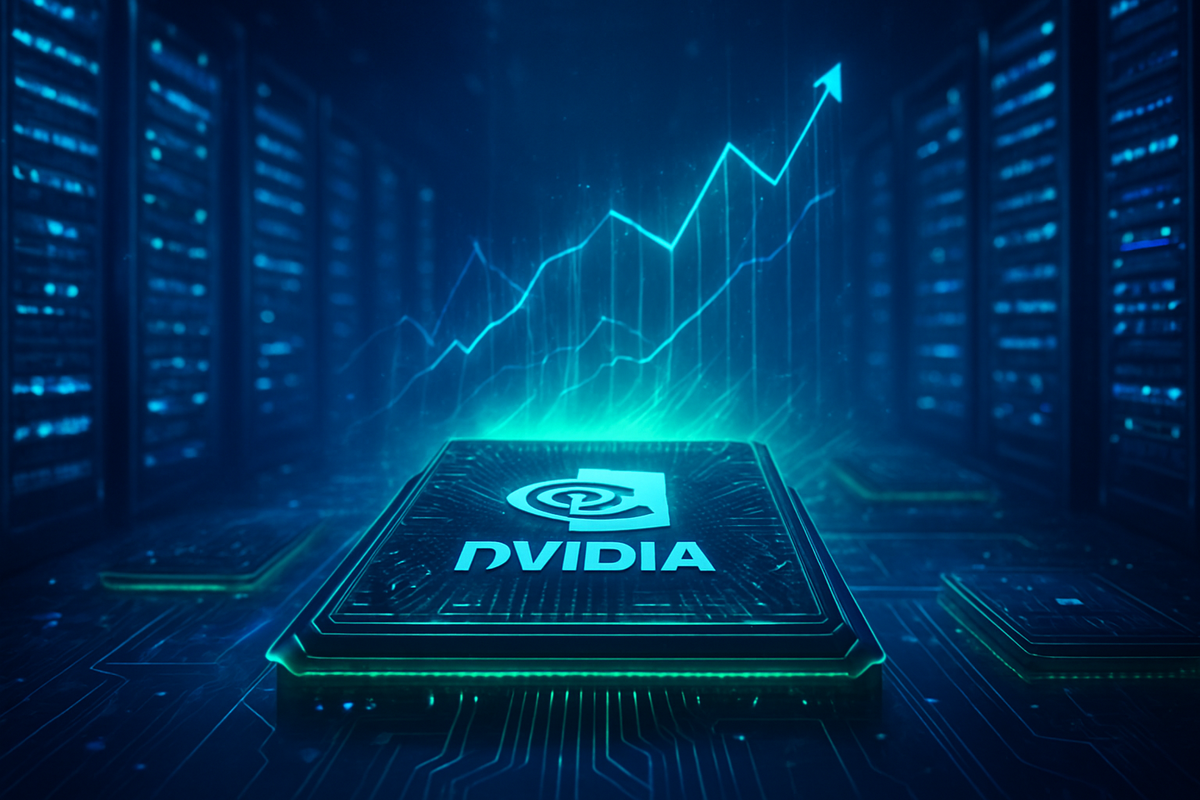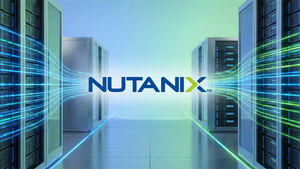
As the clock ticks towards the market close on Wednesday, November 19, 2025, all eyes in the financial world are fixated on Nvidia (NASDAQ: NVDA). The semiconductor titan, a linchpin in the artificial intelligence revolution, is set to unveil its fiscal third-quarter (Q3 FY26) earnings report, an event that has become a quarterly litmus test for the entire tech sector. With an atmosphere described as "priced for perfection," the anticipation surrounding Nvidia's results is palpable, fueled by sky-high "whisper numbers" that significantly outpace official analyst consensus.
The stakes could not be higher. Investors are not just hoping for a beat; they are demanding a decisive "beat and raise"—a performance that not only surpasses current revenue and earnings projections but also delivers robust guidance for the upcoming quarter. Failure to meet these extraordinarily elevated expectations, even by a narrow margin, could trigger a significant market correction for Nvidia and send ripples of uncertainty throughout the broader AI-driven technology landscape.
The AI Juggernaut's Moment of Truth: Official Projections vs. The Street's Hopes
Nvidia's impending Q3 FY26 earnings report has galvanized market attention, marking a critical juncture for the company that has become synonymous with the AI boom. The timeline leading up to this moment has been characterized by relentless demand for its advanced GPUs, particularly from hyperscale cloud providers and enterprises investing heavily in AI infrastructure. This sustained demand has propelled Nvidia's stock to unprecedented highs, creating a narrative of seemingly unstoppable growth.
Official analyst consensus for Q3 FY26 points to Earnings Per Share (EPS) in the range of $1.17 to $1.26, with revenue projected between $54.8 billion and $55.4 billion. These figures, while impressive, represent substantial year-over-year growth of over 50%. However, the unofficial "whisper numbers" circulating among traders and certain buy-side analysts tell a different story, pushing revenue expectations even higher, reportedly around $57 billion for Q3. Similarly, unofficial guidance expectations for Q4 are said to be significantly above a $39 billion whisper number. This chasm between official and unofficial forecasts underscores the intense pressure on Nvidia to deliver an exceptional performance. The Data Center division, driven by the rollout of its new "Blackwell" architecture, is expected to be the primary engine of growth, projected to contribute approximately 88% of total revenue. Any signs of a successful ramp-up for Blackwell will be keenly observed.
Adding to the complexity are recent disclosures from Nvidia's management, indicating that both the current Hopper and the new Blackwell systems are facing supply constraints. While this signals robust demand, it also raises questions about the company's ability to fully capitalize on market opportunities if production cannot keep pace. Options traders are bracing for significant volatility, with predictions of a 6% to 8% stock price swing immediately following the announcement, translating into a potential multi-billion dollar shift in market capitalization. This market reaction will serve as a critical barometer for investor confidence in the sustainability of the AI growth narrative.
The Ripple Effect: Who Wins and Loses in Nvidia's Wake
The outcome of Nvidia's (NASDAQ: NVDA) Q3 FY26 earnings report will send distinct ripple effects across the technology ecosystem, creating clear winners and losers depending on whether the chip giant meets, exceeds, or falls short of the market's stratospheric expectations.
Potential Winners: If Nvidia delivers a resounding "beat and raise," the most immediate beneficiary will, of course, be Nvidia itself. A strong report would likely propel its stock even higher, reinforcing its market leadership and justifying its premium valuation. Beyond Nvidia, its key manufacturing partner, Taiwan Semiconductor Manufacturing Company (TSMC) (NYSE: TSM), stands to gain significantly. As the primary foundry for Nvidia's advanced GPUs, TSMC's revenue and capacity utilization are directly tied to Nvidia's success. A surge in demand for Nvidia's chips translates directly into increased orders for TSMC. Furthermore, major cloud service providers (CSPs) such as Microsoft (NASDAQ: MSFT) (Azure), Amazon (NASDAQ: AMZN) (AWS), and Alphabet (NASDAQ: GOOGL) (Google Cloud), which are significant customers for Nvidia's data center GPUs, could also see a positive sentiment boost. Their continued massive investments in AI infrastructure, enabled by Nvidia's technology, would be validated, potentially leading to increased investor confidence in their own AI strategies and future growth prospects. Companies developing AI software and services that run on Nvidia's platforms could also benefit from renewed optimism and increased funding.
Potential Losers: Conversely, if Nvidia disappoints, the fallout could be widespread. Nvidia's stock would likely face a sharp correction, erasing recent gains and potentially triggering broader concerns about the "AI bubble." This would impact investors holding Nvidia shares and related ETFs. Competitors like Advanced Micro Devices (AMD) (NASDAQ: AMD) and Intel (NASDAQ: INTC) could see mixed reactions. While a stumble by Nvidia might theoretically open doors for them in the long run, in the short term, a broad market downturn in semiconductors or AI due to Nvidia's performance could drag their stocks down as well, regardless of their individual results. A significant miss by Nvidia could also prompt a re-evaluation of AI investment strategies by the major CSPs, potentially leading to a slowdown in their capital expenditures on AI hardware, which would negatively impact the entire supply chain. Moreover, any company whose valuation is heavily reliant on the continuation of the current AI boom could face headwinds, as investors might become more risk-averse and scrutinize growth prospects more closely across the sector.
Broader Implications: Navigating the AI Era's Defining Moment
Nvidia's (NASDAQ: NVDA) earnings report transcends the typical quarterly financial disclosure; it has become a defining moment for the broader artificial intelligence industry and the semiconductor sector as a whole. This event fits squarely into the overarching trend of an accelerating AI revolution, where the demand for computational power, particularly for training and deploying complex AI models, continues to outstrip supply. Nvidia, with its dominant market share in AI accelerators, is at the epicenter of this trend. A strong performance would validate the continued robust investment in AI, signaling that the growth trajectory remains steep and sustainable. Conversely, any signs of slowdown or unmet expectations could fuel concerns about an "AI bubble," prompting a re-evaluation of valuations across the entire AI ecosystem.
The potential ripple effects on competitors and partners are substantial. A surging Nvidia would further solidify its competitive moat, putting pressure on rivals like AMD (NASDAQ: AMD) and Intel (NASDAQ: INTC) to accelerate their own AI hardware roadmaps and market penetration strategies. For partners and customers—from cloud giants to smaller AI startups—Nvidia's ability to consistently deliver high-performance chips and manage supply constraints is paramount to their own growth plans. Any disruption in Nvidia's supply chain or a slowdown in its innovation could force these companies to explore alternative hardware solutions or adjust their AI development timelines. Historically, similar moments have occurred during previous tech booms, where a single dominant player's performance dictated the sentiment for an entire sector. For instance, Cisco Systems (NASDAQ: CSCO) during the dot-com era or Apple (NASDAQ: AAPL) during the smartphone revolution often served as bellwethers. Nvidia currently holds a similar position, making its performance an indicator of the overall health and future direction of the AI market. Regulatory or policy implications could also emerge if Nvidia's dominance continues to expand unchecked. Governments worldwide are increasingly scrutinizing market concentration in critical technology sectors, and an ever-growing Nvidia could attract more attention regarding antitrust concerns or export controls, particularly given the geopolitical importance of advanced semiconductor technology.
What Comes Next: Navigating the Post-Earnings Landscape
The immediate aftermath of Nvidia's (NASDAQ: NVDA) Q3 FY26 earnings report will undoubtedly be characterized by intense market reaction. In the short term, if Nvidia delivers a significant "beat and raise," the stock is likely to experience a substantial surge, potentially pushing it to new all-time highs. This would create a wave of positive sentiment across the tech sector, particularly for companies involved in AI infrastructure and development. Conversely, even a slight miss on revenue or, more critically, weaker-than-expected guidance for Q4 FY26, could trigger a sharp sell-off. The "priced for perfection" scenario means there is little room for error, and any perceived weakness could lead to a significant unwinding of positions, impacting not just Nvidia but potentially dragging down other AI-related stocks.
In the long term, Nvidia's strategic pivots and adaptations will be crucial. Regardless of the immediate earnings outcome, the underlying demand for AI computing power is expected to remain robust. If supply constraints prove to be a persistent challenge, Nvidia will need to intensify its efforts to diversify its manufacturing base or invest further in capacity expansion. This could involve deeper collaborations with TSMC (NYSE: TSM) or exploring partnerships with other foundries. From a product perspective, the successful ramp-up and market acceptance of the Blackwell architecture will be paramount for sustaining growth. The company will need to demonstrate continued innovation beyond hardware, expanding its software platforms like CUDA and AI Enterprise to maintain its ecosystem lock-in.
Market opportunities and challenges will emerge based on Nvidia's performance. A strong report could accelerate investment in specialized AI data centers and foster the development of new AI applications, creating opportunities for software developers, AI service providers, and even power infrastructure companies. However, a weak report could lead to a more cautious investment environment, potentially slowing down the pace of AI adoption in some sectors. Potential scenarios include a continued dominance where Nvidia dictates the pace of AI innovation, or a more fragmented market where competitors gain ground if Nvidia struggles with execution or supply. The latter could lead to increased competition in the AI chip space, potentially benefiting customers through more diverse options and competitive pricing.
A Crucial Juncture: Nvidia's Lasting Impact on the AI Era
Nvidia's (NASDAQ: NVDA) Q3 FY26 earnings report marks a truly pivotal moment, not just for the company itself, but for the entire trajectory of the artificial intelligence revolution and the financial markets tracking it. The key takeaway is the sheer magnitude of expectations encapsulated in the "whisper numbers" and analyst projections. Nvidia is operating in a realm where delivering merely "good" results is insufficient; only an exceptional "beat and raise" can sustain its current valuation and market momentum.
Moving forward, the market will be closely assessing the sustainability of Nvidia's growth, particularly in its dominant Data Center segment. Investors will scrutinize not only the headline financial figures but also the nuances of management's commentary on supply chain resilience, the ramp-up of the Blackwell architecture, and customer demand trends. Any indication that supply constraints are easing or that new demand vectors are emerging will be met with enthusiasm. Conversely, prolonged supply issues or signs of slowing demand growth, even from an incredibly high base, could trigger a significant re-evaluation.
The lasting impact of this earnings cycle will reverberate through the tech industry. It will either solidify Nvidia's role as the undisputed kingmaker of AI for the foreseeable future, or it will introduce a degree of uncertainty that could encourage greater competition and diversification within the AI hardware landscape. What investors should watch for in the coming months are not just subsequent earnings reports, but also capital expenditure plans from major cloud providers, developments from competing chip manufacturers like AMD (NASDAQ: AMD) and Intel (NASDAQ: INTC), and any shifts in geopolitical dynamics affecting semiconductor supply chains. Nvidia stands at a crossroads, and its performance today will undoubtedly shape the narrative of the AI era for years to come.
This content is intended for informational purposes only and is not financial advice





